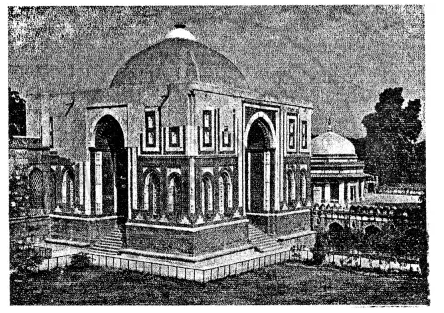Advertisements
Advertisements
Question
This is a picture of the most beautiful specimen of Khilji architecture, which was added as an entrance to the Qutb complex in Delhi.

With reference to the reign of this ruler, mention two important features of the Market control policy
Solution
Alauddin set up three markets at Delhi – one for food grains, the second for cloth and the third for horses, slaves, and cattle. Each market was under the control of an officer called Shahna.
- The prices of all commodities were fixed and the prices of essential items were kept low.
- Market officers were appointed to keep a strict watch on the prices, weights, and the activities of the traders.
- Anyone caught hoarding goods or cheating customers in price or weight was severely punished.
- State warehouses were set up and stocked with food grains.
RELATED QUESTIONS
This is a picture of the most beautiful specimen of Khilji architecture, which was added as an entrance to the Qutb complex in Delhi.

During whose reign was it built?
This is a picture of the most beautiful specimen of Khilji architecture, which was added as an entrance to the Qutb complex in Delhi.

With reference to the reign of this ruler, mention two important features the Reorganization of the army
State whether the following statement is True or False:
Urdu, a new language, developed in the Sultanate period.
State whether the following statement is True or False:
The culture of the sultanate period saw the healthy blending of Hindu and Muslim traditions.
State whether the following statement is True or False:
The village administration was managed by the Bakshi.
State whether the following is true or false:
The Rajput style of miniature painting continued in the Sultanate period.
Answer the following question briefly:
Describe the main features of society during the Sultanate period with reference to the peasants.
Answer the following question briefly:
Discuss the distinctive features of Sultanate architecture.
This is a picture of a musical instrument used in Hindustani classical music. The name is derived from the Persian words—‘seh’ (meaning ‘three’) and tar’ (meaning ‘strings’).

During which period in medieval Indian history was this instrument invented?
What is the Price control policy?
